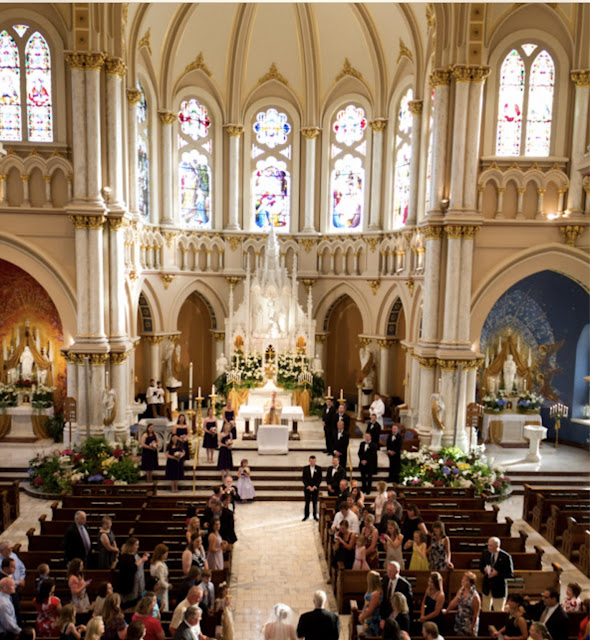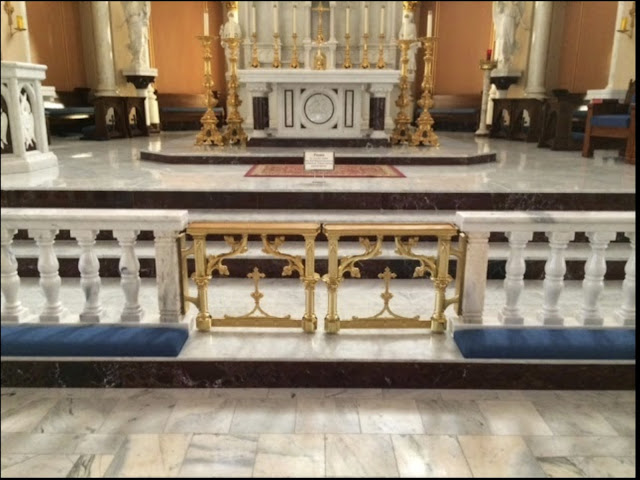If you rail, this is how not to rail, putting the altar behind bars and makes the railing equal in value to the altar and ambo:
If you rail, this is how you rail, making sure the rail is secondary and/or invisible from the nave in a full church:
I think some liturgists got it right when they insisted that the sanctuary not seem to be fenced off from the nave of the church by an altar railing. I did not agree and still do not agree that altar railings should have been removed altogether. I don’t agree that standing to receive Holy Communion has been a good thing for Eucharistic belief and piety, in fact it has been a clear disaster as has been Holy Communion received casually on the hand and in a variety of silly ways.
But back to railings. This is the altar railing at Saint Joseph Church in Macon, Georgia prior to Vatican II:
But look at this post-Vatican II photo with a new, but horrible, free standing altar placed in front of the intended altar but on the lower floor of the sanctuary and taking up all the room:
Of course the chairs hide the old high altar no longer used nor the tabernacle, as that was shunted to the right side altar, not in view in this photo. But look at the altar railing, still in its original place, it hides the new free standing altar or is in competition with the new free-standing altar. That is not the case, even in this photo, with the high altar which, if the chairs weren’t there, would be completely visible and the railing isn’t competing with it in importance. The altar is the most important liturgical furnishing in any church!
In 2004, when I became pastor at St. Joseph, we went through a major renovation/restoration and expansion of the sanctuary into the nave. I convinced the committee to remove the altar railing and I asked that the new altar we had designed be placed higher up so as to be in a prominent position as is the high altar and that the new altar, at least look like the main altar, since we could not or would not remove the high altar which was beloved and a beautiful backdrop.
When the church was dedicated in 2006, it no longer had an altar railing as these photos show:
Then, I, who removed the altar railing by 2006, decided in 2014 that I would rail again and do it right. This is how we did it. We extended the first step leading the the sanctuary into the nave so that the railing could be placed in a way that there was room for people to kneeling in front of it, but from the nave level, without going up any stairs, and there was enough room for the priest to distribute Holy Communion behind the railing, spacious room:
And then, communicants could kneel at the altar railing, railed right, to reverently receive Holy Communion and live happily ever after and forever in heaven.

















1 comment:
Sophia here: To which I respond with a very emphatic Amen and a Glory be to Jesus, the High Priest and Victim at every Mass! Thanks so much for the lovely photos of this incredibly beautiful Church and the accompanying mini tutorial on altar rails!
Post a Comment